08
2022
-
08
Experts interpret the "Quality Management Standards for Cosmetics Production": Strictly select materials, standardize water use, and ensure traceability
Analysis of key points of material and product management.

The "Code for the Quality Management of Cosmetics Production" (hereinafter referred to as the "Code") will come into effect on July 1 this year. At that time, cosmetic registrants, filers, and entrusted manufacturers should organize the production of cosmetics in accordance with the requirements of the "Code". The requirements for material and product management, especially the material management department, in the "Specification" are quite different from the current "Specifications for Cosmetics Production Licensing" and "Key Points for Cosmetics Production Licensing Inspection". Implement the requirements of the Specification.
Material and product management is an important part of the whole process management of cosmetic production, and it is also a key factor to ensure the quality and safety of cosmetic products. Chapter 5 "Material and Product Management" of the Specification specifies specific requirements from three dimensions: material management, production water and product management.
1. Material Management
Establish a management system to prevent error pollution
Materials in cosmetic production activities refer to raw materials and packaging materials used in production. According to the requirements of the "Specification", the purchased semi-finished products should be managed with reference to the material requirements. Based on the characteristics of cosmetics as a physical mixture of raw materials, material safety largely ensures the quality and safety of the final product.
The purpose of material management is to ensure the establishment of a material management system, to clarify material management procedures, to ensure that the raw materials and packaging materials used in cosmetic production meet the corresponding standards; to ensure that materials are received, stored, issued and used in a standardized manner, and effective measures are taken to prevent contamination, cross-contamination, and errors. and confusion.
Material management is subdivided into supplier management, material review, material acceptance, material storage and material release according to the management process.
Supplier Management Article 29 of the Regulations on the Supervision and Administration of Cosmetics (hereinafter referred to as the Regulations) and Articles 24 and 25 of the Measures for the Supervision and Administration of Cosmetics Production and Operation (hereinafter referred to as the Measures). The selection and management of businessmen shall be stipulated. Article 28 of the "Specifications" stipulates that enterprises should establish and implement a material supplier selection system, and review and evaluate material suppliers.
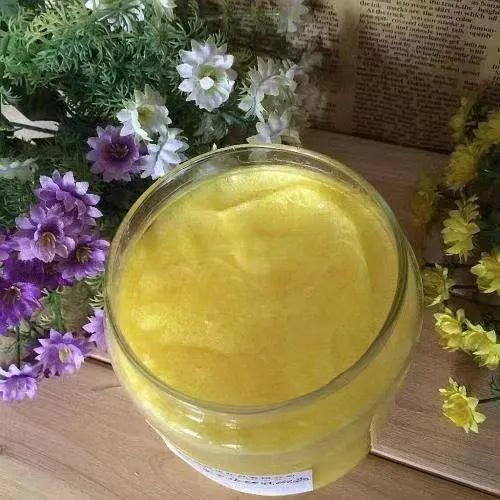
Material suppliers can be direct manufacturers or distributors. Regardless of the type of supplier, cosmetic companies should, through direct or indirect means, fully review and evaluate the production qualification, production conditions, production capacity, technical level and quality management of the material manufacturer before determining the supplier. Before conducting an on-site audit, a clear audit plan should be formulated and notified to the supplier, and the on-site audit will be conducted after confirmation by both parties.
The on-site audit should give priority to the production links directly related to material quality and safety, such as production workshops, warehouses, inspection rooms, etc. The content of the on-site audit includes the production environment, technological process, production records, inbound and outbound records, inspection records, etc. Cosmetics registrants, filers, and entrusted manufacturers should make audit conclusions for suppliers who have completed the audit, and can establish supplier levels and a list of qualified suppliers according to the audit conclusions.
The above situation shall be re-evaluated when the supplier has supplied the supply for a certain period of time or when the conditions of the assessed raw material manufacturer have changed significantly. Cosmetics enterprises should sign purchase contracts with material suppliers on the basis of adequate review and evaluation of raw material suppliers.
The procurement contract shall include or be accompanied by a quality agreement, specifying the quality responsibilities and obligations of both parties. Cosmetic raw materials delivered by raw material suppliers must meet the raw material quality standards agreed in the quality agreement to ensure the continuous stability of raw materials.
In addition, Article 28 of the "Specifications" also requires that enterprises should establish a list of qualified material suppliers based on the results of the audit and evaluation, identify key raw material suppliers, conduct key audits on key raw material suppliers, and conduct on-site audits if necessary.
There are two methods of supplier audit: written audit and on-site audit. For key raw materials, it is recommended to conduct regular on-site audits of material manufacturers. Among them, key raw materials refer to raw materials that have a great impact on the safety, efficacy and quality of cosmetic products, generally including bulk raw materials, high-frequency raw materials, compound raw materials, animal and plant extracts, and semi-finished cosmetic products directly used for filling. As well as restricted substances that have a greater impact on product safety, and ingredients that play a major role in product efficacy (such as sunscreens, freckle and whitening ingredients, anti-aging ingredients, etc.).
Material review Article 29 of the Regulations and Article 25 of the Measures provide for material review. According to Paragraph 1 of Article 29 of the "Specifications", enterprises shall retain necessary information on the quality and safety of raw materials, purchased semi-finished products, and internal packaging materials.
The "quality and safety-related information" here includes raw material analysis certificates, quality specification information, test reports, safety technical specifications, etc. The information materials should specify the ingredients of compounded raw materials and purchased semi-finished products.
At the same time, the raw material quality and safety information is also the information that needs to be filled in when the product is filed. The State Food and Drug Administration has made it clear in the announcement on the implementation of the "Regulations on the Administration of Cosmetics Registration and Filing Materials" (hereinafter referred to as the "Regulations"), since January 1, 2022. From January 1, 2023, when applying for registration or filing, registrants and filers shall, in accordance with the requirements of the "Regulations", provide safety-related information on raw materials with antiseptic, sunscreen, coloring, hair dyeing, freckle-removing and whitening functions; from January 1, 2023, When applying for registration or filing, the registrant or filer shall provide the safety-related information of all raw materials in accordance with the requirements of the "Regulations"; for cosmetic products that have been registered or filed before, the registrant and filer shall apply before May 1, 2023. Supplementary information on the safety of all raw materials in the product formulation is provided.
Paragraph 2 of Article 29 of the "Specifications" stipulates that enterprises should review raw materials, purchased semi-finished products, and internal packaging materials before purchasing materials, and must not use prohibited raw materials, new raw materials that have not been registered or filed, and must not exceed the scope of use , Restricted conditions to use restricted raw materials to ensure that raw materials, purchased semi-finished products, and inner packaging materials meet the requirements of laws and regulations, mandatory national standards, and technical specifications.
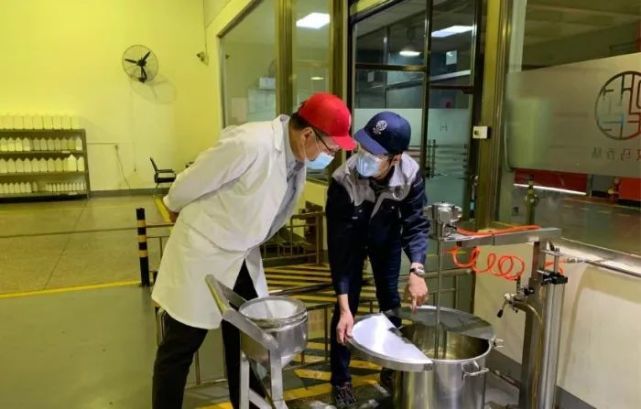
The laws and regulations on the basis of material review mainly include "Regulations" and "Measures", and the standards and technical specifications mainly include "Regulations", "Cosmetics Safety Technical Specifications" and "Catalogue of Raw Materials Used in Cosmetics". The author believes that under the framework of the registrant filer system, when the entrusted production enterprise strictly implements the requirements of the "Specification" in accordance with the regulations, and does a good job in the management of material review and acceptance, there is a situation where the entrusted production enterprise is exempted from administrative punishment.
Material acceptance Article 30 of the Regulations and Articles 25 and 32 of the Measures stipulate the acceptance of materials. The first paragraph of Article 30 of the "Specifications" stipulates that enterprises should establish and implement a material purchase inspection record system, establish and implement material acceptance procedures, and clarify material acceptance standards and acceptance methods.
The acceptance criteria for raw materials generally include product name, raw material properties (color, odor, state, transparency), physical and chemical properties (viscosity, melting point or boiling point, flash point, pH, solubility, volatility, common heavy metals and limits of major impurities, etc.), composition and content, microbial control indicators, etc., and if necessary, the impurities that may be contained and other risk substances that need to be controlled and their limits should also be specified.
If the registrant or filing person who entrusts production provides production raw materials, the registrant or filing person shall formulate the acceptance criteria for raw materials and inform the entrusted production enterprise. In recent years, the number of cosmetics featuring "plant extracts" and "natural plants" has been increasing day by day. Plant extracts are used by many local companies as the driving force to build brand characteristics. Therefore, the acceptance of plant extract raw materials is particularly important.
For plant extracts, the quality acceptance criteria should specify the plant base, the parts of use, the main extraction process, the main control indicators (such as the content of main components, fingerprints, etc.), microbial control indicators, etc.; such materials approved for use. According to the principle of risk management and according to its own ability, enterprises can choose two acceptance methods: incoming inspection and comparison with supplier data for material acceptance.
The first paragraph of Article 31 of the "Standards" for material storage requires that materials and products should be stored in accordance with the prescribed conditions to ensure stable quality. Materials should be classified and placed in batches and clearly marked.
Cosmetics enterprises should classify and store them according to the characteristics of raw materials, such as solid and liquid, normal temperature and low temperature storage, bulk and small amount of materials, etc. should be stored separately; flammable, explosive and polluting, volatile, corrosive materials It should be stored independently in accordance with the corresponding regulations.
Enterprises should store the raw materials according to the quality status, i.e. pending inspection, qualified, unqualified, partition or adopt other measures that can achieve the same effect, and use different color labels to clearly mark them to prevent confusion and errors during acceptance, storage, release and use. ; Raw materials should be sealed and kept at a certain distance from walls and floors. In addition, the company should also establish a cosmetic material ledger and a location card, and the corresponding information on the account, card, and goods should be consistent; signature, etc.
Due to the situation that the remaining materials in the workshop are often returned to the warehouse during the production process of cosmetics, the batch number and other information of the repackaged raw materials should be consistent with the original packaging, and the original and necessary information should be marked.
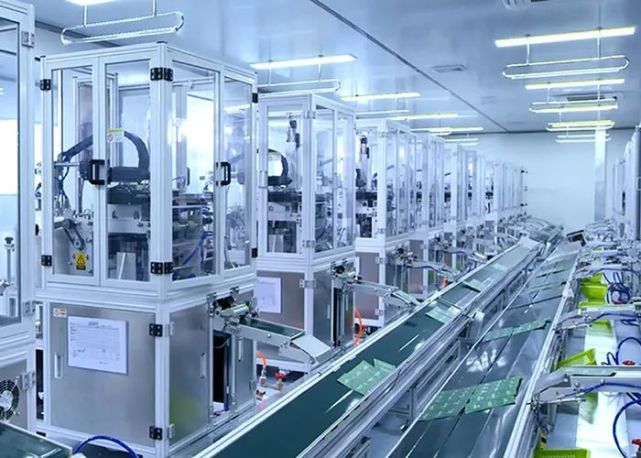
Article 29 of the Regulations on Material Release and Article 28 of the Measures stipulate the selection and management of suppliers. Paragraph 2 of Article 32 of the "Specifications" clearly states that enterprises should establish and implement procedures for handling unqualified materials. Materials beyond the expiration date shall be managed as non-conforming products.
Generally speaking, each batch of production materials can only be used after sampling, inspection and release. For the production materials that have passed the inspection, the quality department will issue the inspection report, the qualified label and the material release sheet, and the designated personnel will change the material status from pending inspection to qualified.
For the production materials that fail the inspection, the enterprise should move them into the unqualified area according to the variety and batch number. The enterprise shall establish and implement the non-conforming material handling procedures, and the non-conforming product management records shall include the non-conforming items, the reasons for the non-conforming product, the treatment measures such as concessional acceptance, return or destruction, the situation approved by the quality department and the processing process, etc.; When materials cause cosmetic quality problems, the reasons should be found out and eliminated in time to prevent or reduce the recurrence of substandard products.
In addition, enterprises should also make evidence-based regulations on the use period of materials. Materials that have not been used or filled or filled after the expiration date should be treated as substandard products in a timely manner.
2. Production water
Guarantee water quality and water quality, and regularly test
Article 9 of the Measures stipulates water for production. Paragraph 1 of Article 33 of the "Specifications" clearly states that the quality and quantity of water used for production by enterprises shall meet production requirements, and the water quality shall at least meet the requirements of sanitary standards for drinking water; if the water for production is small-scale centralized water supply or decentralized water supply, it shall be Qualified inspection and testing institutions shall test production water at least once a year.
Production water is a key factor in the production of cosmetics. The main formula ingredient in common lotions, lotions, creams and other products is water. In the production process of cosmetics, a large amount of production water is also used when washing bottles and equipment containers. Production water is critical to the quality and safety of cosmetics. The quality standards of production water mainly refer to the indicators specified in GB 5749-2006 "Sanitation Standards for Drinking Water".
Because there are many indicators specified in this standard, it is difficult for general laboratories to complete the experiments of all indicators. In this case, a qualified inspection and testing agency can be entrusted to the factory on a regular basis (at least once a year) to conduct sampling monitoring and issue a report. The "Specification" implements the policy requirements of "decentralization, management and service". For centralized water supply, it is clear that enterprises can provide proof of the source of production water, that is, proof of access to the pipe network; at the same time, enterprises are required to carry out regular monitoring of production water to ensure that the water quality meets the standard requirements. .
The second paragraph of Article 33 of the "Specifications" requires that enterprises should establish and implement process water quality standards and process water management procedures, and regularly monitor the quality of process water to ensure compliance with production quality requirements.
According to the "Specification", process water refers to the water used in production to manufacture and process products and related to the process of manufacturing and processing. Enterprises should formulate quality standards and management procedures for process water according to the process requirements of production products; the laboratory can determine the monitoring sampling points, frequency and indicators of daily process water according to the actual situation of the enterprise. The monitoring indicators generally include the total number of colonies, physical and chemical properties (pH, Conductivity, chromaticity, turbidity, etc.), and control the quality of process water through regular and irregular monitoring to ensure compliance with production quality requirements.
3. Product Management
Meet the technical requirements and label the label in compliance
Articles 35, 36, and 37 of the Regulations and Articles 35, 36, and 38 of the Measures stipulate product labeling, and provide for children Cosmetic labels make special provisions. Paragraph 1 of Article 34 of the "Specifications" clearly states that products should comply with relevant laws and regulations, mandatory national standards, technical specifications, and technical requirements stated in cosmetic registration and filing materials.
The products produced by the enterprise should be consistent with the technical requirements stated in the registration and filing materials, that is, the feeding formula and production process of the enterprise in the production process should be consistent with the technical requirements in the product registration or filing application materials. Raw materials, packaging materials and other key materials that affect product quality should meet the requirements of relevant laws, regulations, standards, and specifications to ensure product quality and safety.
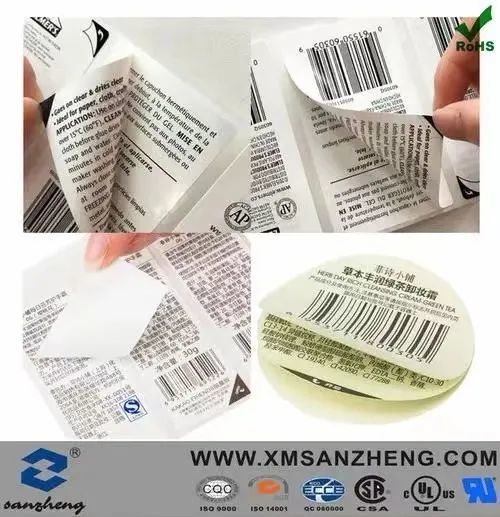
The second paragraph of Article 34 of the "Specifications" stipulates that the production process of labeling on the inner packaging material should be completed in the production enterprise that completes the last production process of contacting cosmetic contents.
The legislative intention of this clause is to prohibit cosmetics from leaving the factory before the product labeling is completed, which is commonly referred to as "white bottle delivery", which makes the product unable to be traced. It is worth noting that, on the premise that the production process of the original packaging and labeling of imported cosmetics has been completed and traceable, the act of affixing Chinese labels can not be completed in the cosmetics manufacturing enterprise that has completed the last production process of contacting the cosmetic contents.
The third paragraph of Article 34 of the "Specifications" stipulates that the expiration date marked on the product sales package shall not be changed without authorization. Unauthorized change of the use period of cosmetics violates the relevant provisions of the "Regulations", and will be subject to severe penalties in accordance with Article 60, Paragraph 1, Article 4, Article 4 of the "Regulations" to change the use period of cosmetics.
Related News



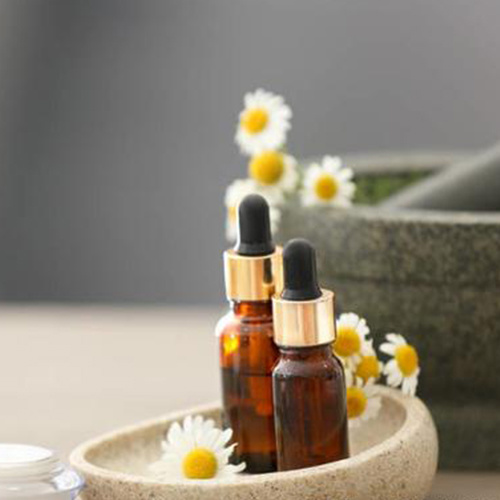
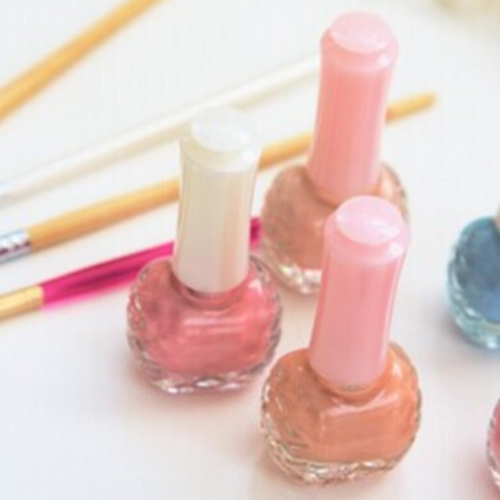
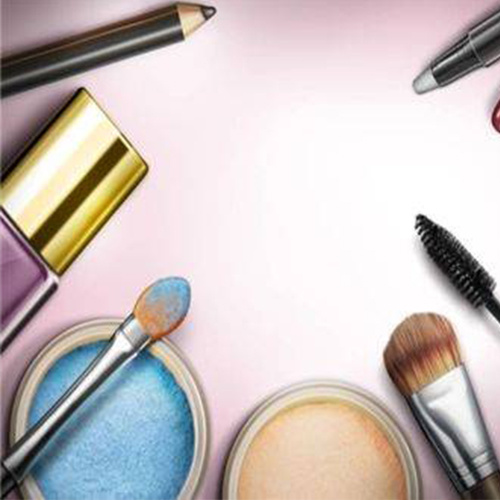
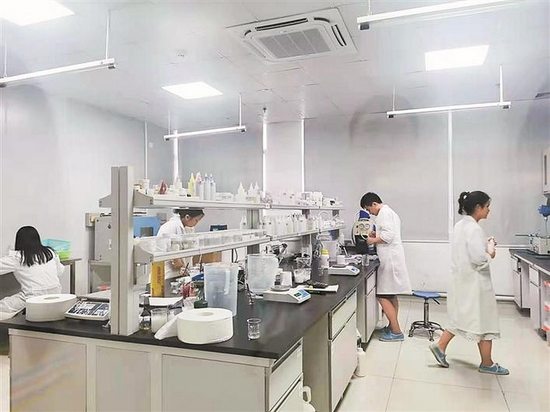








 laminatefloor@163.com
laminatefloor@163.com 

 Message
Message 